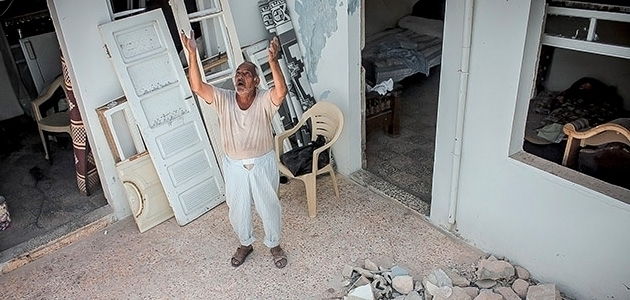By Andreas Reventlow
Data suggests the first six months of 2015 were less bloody for Syria’s media than those of last year. But what’s behind the devastating casualty numbers?
With over four million refugees having fled to neighboring countries, the crisis has become the single largest refugee emergency for almost a quarter of a century, says UNHCR. Far more than 210,000 have died, says the Syrian Observatory for Human Rights.
The impact on the country’s media has been disastrous with infrastructure turned to rubble and masses of journalists injured, kidnapped, killed or on the run. The first six months of 2015 though do suggest a decrease in attacks with a total of 47 “media activists” killed, compared to 64 in 2014.
Responsible for the attacks are government forces, Kurdish militia, groups such as Free Syrian Army, as well as ISIS and the Nusra Front, says the human rights group, Syrian Network for Human Rights (SNHR).
But how do we come by these statistics and are we able to rely on them?
‘Painstaking attention to detail’
The Syrian Network for Human Rights monitors human rights violations and pays specific attention to attacks on the media. Submitted by a network of partners spread out across the country, the data is used by several UN agencies and featured in both Arab and international media on an ongoing basis.
After the data is received, a team of victim documentation specialists filters through the information to make sure the photos and video material is credible and not a duplicate of the same incident reported earlier. Victims are categorized by perpetrator, geographically, and by gender, cause of death, type of attack and whether they were civilian or not. The data is then cross-checked with news reports and validated through as many verifiably independent sources as possible. The whole thing requires ‘painstaking attention to detail’, says one of the specialists.
Finally, the lists of victims and any supporting documentation are passed on to organizations, including the UN and civil society groups like IMS where it is used for evidence-based advocacy and to media outlets worldwide that cover the conflict.
‘Media activists’
Monitoring violations of the rights of a specific group of people is a discipline fraught with difficult decisions. When is a journalist a journalist and who is to say whether she was killed or attacked because of her profession?
For the Syrian Network for Human Rights, as well as for its specialized international counterparts like the New York-based Committee to Protect Journalists and the Paris-based Reporters without Borders, it comes down to something reminiscent of the editorial process where fact-checking and a variety of diverse sources are key ingredients in ensuring that the data is credible. That way, it can be used to call attention to the harsh realities of conflict and human suffering.
The Syrian Network for Human Rights issues monthly reports on attacks on what it calls “media activists” (as illustrated above), a broad term that covers not only citizen journalists and bloggers, but also a wide variety of activists who use journalistic techniques to cover the conflict as it unfolds. The group also reports on attacks on journalists in a more narrow, traditional sense. Last year, SNHR reported a total of 17 journalists killed, 43 kidnapped or arrested, and 15 injured.
Like everywhere else, those who have received formal training as journalists are increasingly joined by the self-taught as well as those who own a cell phone but who have received little or no training. In places like Syria where the war has wrecked havoc for over four years, their presence is of paramount importance in documenting the destructive impact of the war.
Like the more narrowly defined traditional journalist, the work of these media activists has immense public interest value. Some of them go on to become established bloggers, others become journalists for a day when they are at the right (or most often, wrong) place at the right time. Whatever they would choose to put on a business card, their tragic circumstances are monitored and documented meticulously by groups like the Syrian Network for Human Rights so that the extent of the crisis is brought to light and crimes committed are not forgotten.
IMS supports the documentation of attacks on journalists and other rights violations to bring attention to the dire situation of journalists caught in conflict and to support evidence-based advocacy. We work closely with a large selection of civil society groups that monitor the impact of conflict and other emergency situations on the media and citizens.
Photo credit: Christiaan Triebert


